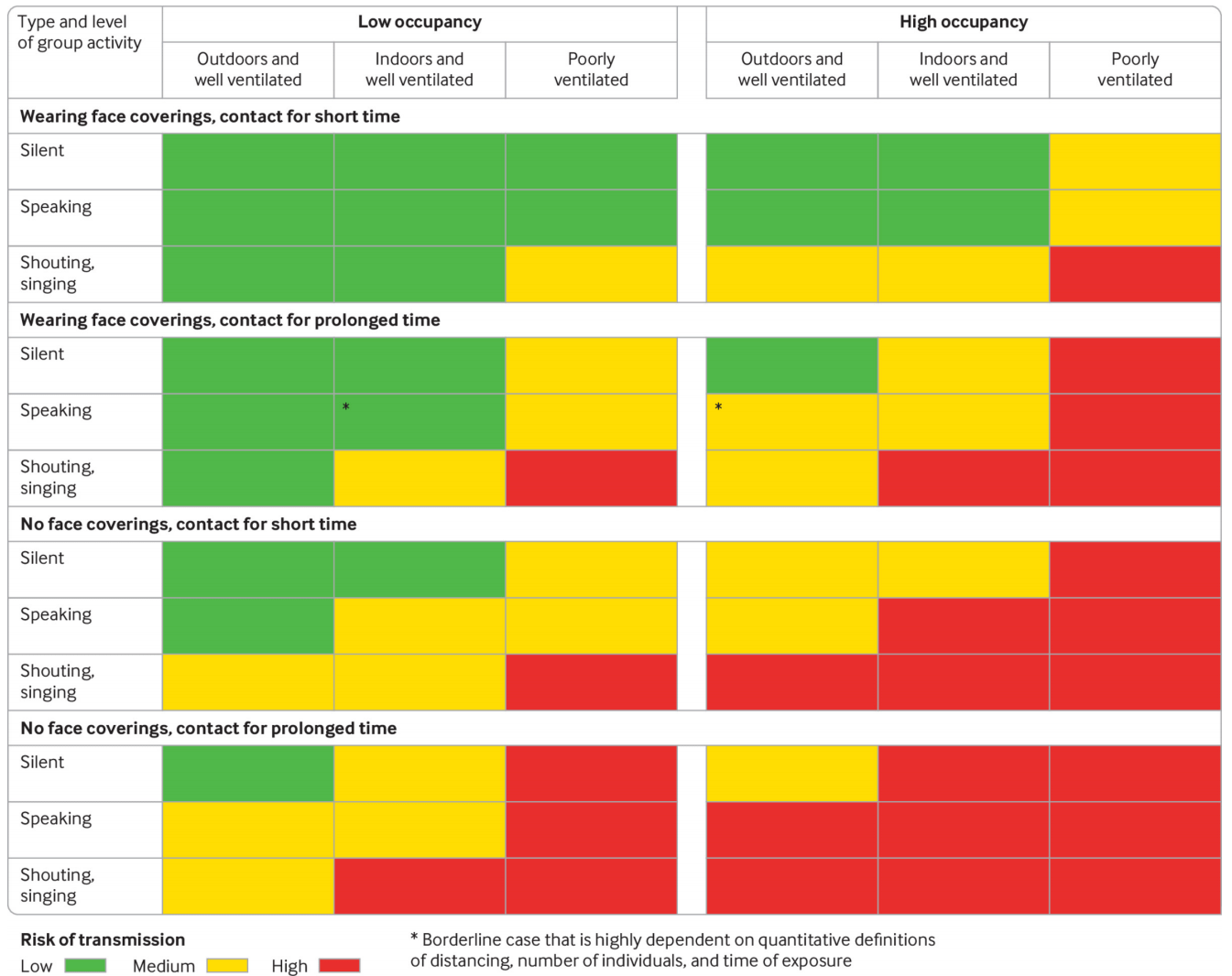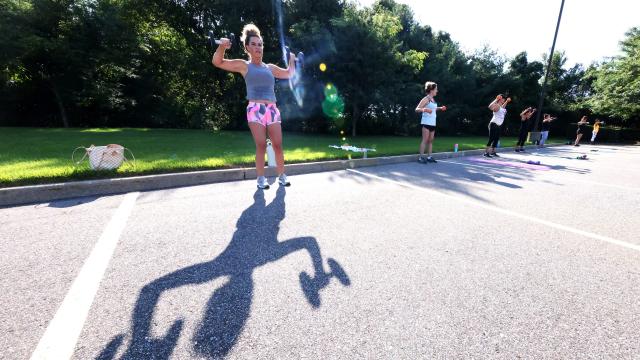The 1.83 m rule for distancing from others during the covid-19 pandemic might be too rigid for its own good, a group of experts in the U.S. and UK are arguing. In a new paper out Tuesday, they make the case for adopting a more nuanced approach to staying safe, where people take into account things like whether they’re indoors or outdoors, staying in a location for a prolonged time, or wearing a face mask in order to figure out their risk level and how far apart they should be from others.
The crux of their argument, published in the BMJ on Tuesday, is that the 1.83 m rule — or 2-metre rule, outside of the U.S. — endorsed by public health groups like the World Health Organisation is based on antiquated science first collected more than half a century ago, usually involving viruses very different from the culprit behind covid-19, the coronavirus called SARS-CoV-2. The group of experts include Nicholas Jones, a primary care doctor and doctoral research fellow at the University of Oxford in the UK, Zeshan Qureshi, a UK paediatrician, and Lydia Bourouiba, a mathematician and associate professor at MIT who has studied the fluid dynamics of how infectious diseases spread, including those caused by respiratory viruses like SARS-CoV-2.
As the authors note, we’ve had to learn and relearn a lot about how SARS-CoV-2 works. Initially, for instance, it was thought that the coronavirus was difficult to transmit between people at all. Even once human-to-human transmission was confirmed, it was still assumed that the virus was mostly spread through close contact with large droplets emitted by infected people and that these droplets had a very short range before they fall to the ground, roughly extending to 1.83 m.
In recent months, however, studies have shown that the virus can stay intact in tinier aerosols, which are capable of travelling farther than 1.83 m and can stay aloft for longer periods of time. Other evidence has suggested that both droplets and aerosols can be propelled farther than 1.83 m under the right conditions, such as indoor places with strong airflow from an air conditioning system.
Though there are still questions about how much of a role aerosols play in driving transmission of the virus, evidence continues to accumulate that covid-19 can at least sometimes act like an airborne disease. And as such, the authors argue, it’s time to retire and replace the 1.83 m rule.
Rather than think exclusively about personal space, they say, people should consider their circumstances. If you’re outdoors and wearing a mask, then the risk of transmission during a group activity with only a few people should be relatively low and the need for distancing is less stringent, even if you’re there for a while. If you’re indoors in a well-ventilated place, not wearing a covering, and around people who are talking, that risk climbs, and distancing matters more. And if you’re indoors for a long time, not wearing a face covering, and around people who are yelling or singing in a poorly ventilated room, that’s a much higher risk than the first scenario, and ideally you shouldn’t be there at all; but if you are, then keeping a distance is especially important, though it may not be sufficient to prevent you from becoming infected.
It’s admittedly not as easy to crunch down into a one-sentence heuristic as the 1.83 m rule, though the authors have created a handy graphic. But the nuance of this advice might make life more comfortable for people earnestly worried about walking in the park or doing other outdoor activities, they argue.

“This would provide greater protection in the highest risk settings but also greater freedom in lower risk settings, potentially enabling a return towards normality in some aspects of social and economic life,” the authors wrote.
Of course, keeping a flexible distance isn’t the only thing we can do to keep ourselves safe as possible during this pandemic. It’s important to wear a face mask when indoors with people outside of your household and outdoors when distancing isn’t possible. Hand-washing and sanitizing also remain important. Businesses need to keep their spaces clean and provide good air ventilation, while hospitals and other high-risk places have to keep their workers safe with ample personal protective equipment.
